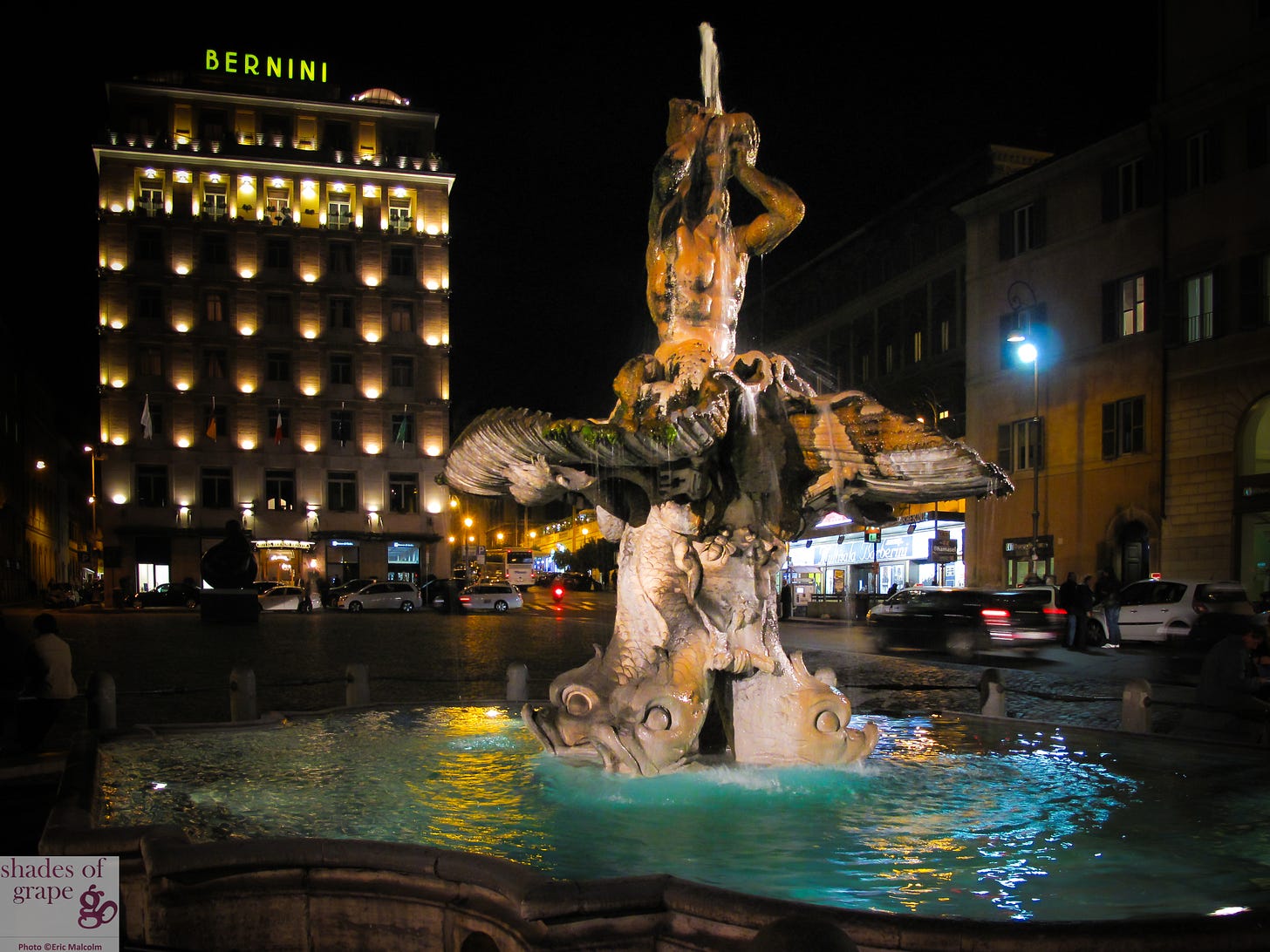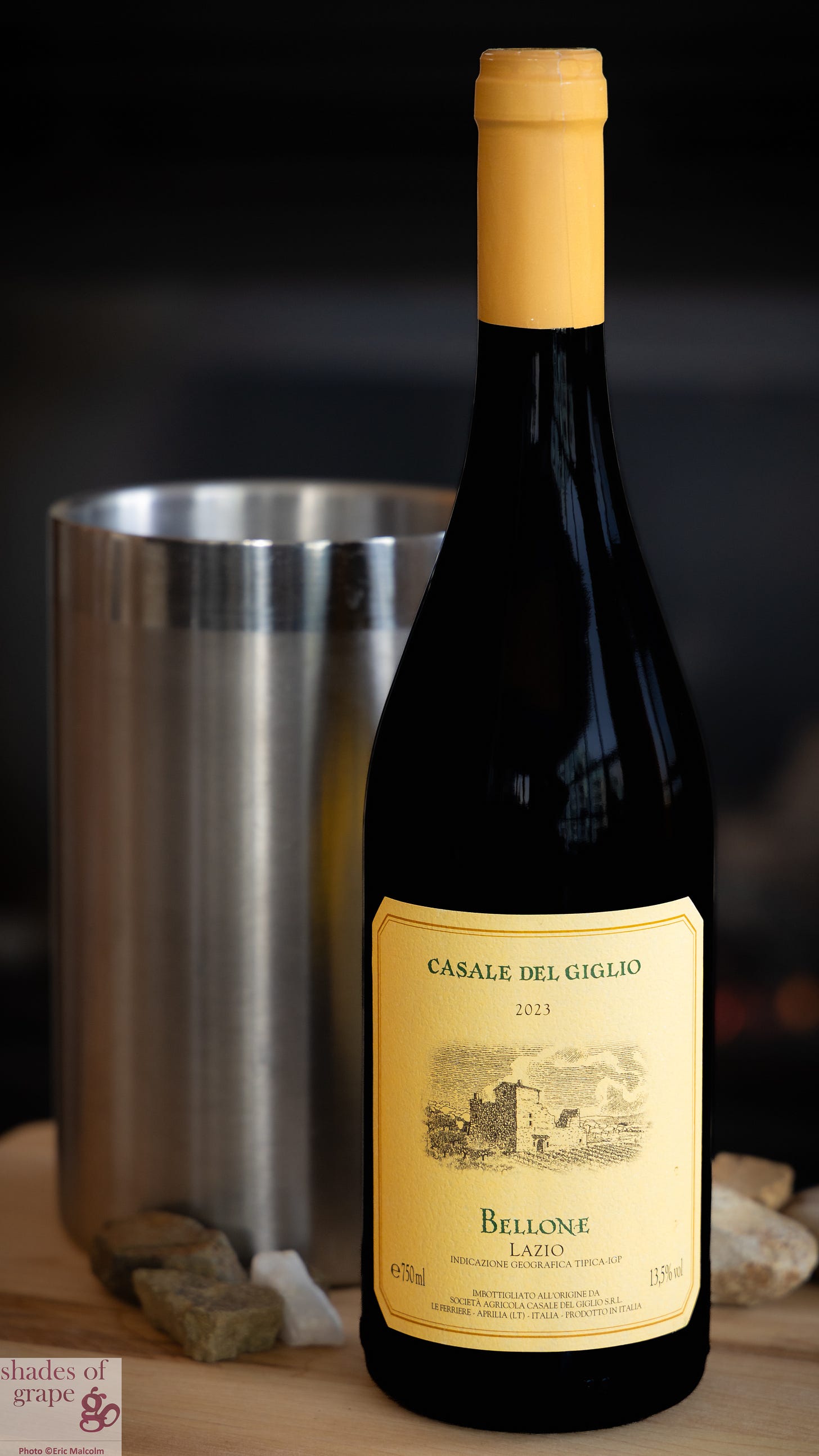When in Rome ... Drink Bellone (Grape) Wine!
-from pliny to present: the timeless appeal of Lazio wines
Live in Alberta and would like some personalized attention from me? Please contact me - I offer personal wine curation & individual private shop time. It is getting more and more popular!
Thanks to all the paid subscribers for their support! This funding helps cover the costs involved in creating these weekly articles!
Appreciate my wine recommendations? Enjoy my personal wine curation service? Find my wine writing valuable? Consider upgrading to a paid subscription! This helps me continue sharing the world of wine with you.
Where are we going today? I feel like an adventure!
How about Roma?
Perfect – exactly what I had in mind!
How are you feeling about white wines these days?
I have to say the more I get exposed to very good quality whites, the more I get them and enjoy them!
Good! You are in for a treat!
We will talk about a region called Lazio, of which Rome is part of. We will also touch upon one of its indigenous Italian white grapes called Bellone!
Does the Bellone pair well with Bologna!???
Oh boy!
Bellone is believed to be an ancient grape documented by Pliny the Elder (a roman scholar born in 23 AD) being grown in the Lazio region. Lazio, called Latium in English, is in Central Italy, surrounded by the Mediterranean Sea to its west, Tuscany & Umbria to the north, Abruzzo to the east, and Campania to the south.
In Pliny’s day Lazio wines were famous and considered some of the most prestigious. After the Roman Empire fell, cultivated vineyards were abandoned, changing the wine world of its time.
Today, Lazio’s wine production is comprised of 70% white wine production from 27 sub-regions. These white wines are mostly made from Malvasia and Trebbiano Toscano. The red production is made mainly from Merlot, Sangiovese and the indigenous variety Cesanese.
You mentioned Bellone is an indigenous grape. Are indigenous grapes genetically different?
In the wine world, the terms “international” as well as “indigenous” grape vine varieties are used. The former are those that are well known internationally and commonly planted in many of the world’s wine regions. But it is a loose term, and the list will vary depending on the source. The most important international varieties are:
Black Grapes
Merlot
Syrah/Shiraz
White Grapes
Sauvignon Blanc
Muscat/Moscato
Gewürztraminer
Viognier
Pinot Blanc
Okay so indigenous vine varieties must be less widely grown then.
Exactly. The Oxford Companion to Wine describes them as: ‘Vine varieties that are intensely local to a particular area and have a relatively long tradition of being grown there.’
Depending on the source, the following could be considered international or indigenous as they are now grown beyond their country/region of origin, although not as commonly as the examples above.
Tempranillo
Italy is known for having significantly more indigenous grape varieties than any other country - 375 to 500 identified varieties depending on the source. Bellone clearly falls in the indigenous camp.
Today’s producer, Casale del Giglio, is a definite Cork staff favorite. The two featured wines are both made with Bellone. While the winemaking for the 2 wines is almost identical, the Athium is made from grapes from older vines of approximately 60 years in age. This results in a higher cost, as the older vines produce a lower yield of fruit.
Seems like bad business - pull those vines and plant new ones!
Old vines can also produce higher quality fruit. In this case I would say that the Anthium has more precision and complexity in flavors. It has a slight grip that the “standard” Bellone doesn’t have despite both having the both undergone similar skin contact.
But both these wines are equally of very good quality and have their own particular cachet!!
Enjoying my recommendations? Consider upgrading to a paid subscription.
Casale Del Giglio Bellone 2023 from Lazio, Central Italy
Style: Medium-Dry, Medium Body White Wine
Varieties: Bellone
This medium-dry (some sweetness but not a dessert wine) is intense and tangy wine has notes of peach, nectarine, mango, unripe mango, yogurt. This fruity and lively wine has some sweetness and a long finish.
Best pairings: This wine would be awesome with spicy dishes or considered adding a little heat to the following pairing suggestions. Seafood (grilled prawns or calamari), Ground turkey with vegetables chili, Mexican food (tacos & burritos), Cacio e pepe pasta dish, Asian dishes (curries, stir fries etc)
Serving Temperature: 6-8 degrees Celsius
Serving Tips: Enjoy
Price: $24 Cdn
Casale Del Giglio Anthium Bellone 2023 from Lazio, Central Italy
Style: Dry, Medium Body White Wine
Varieties: Bellone
This rich and complex wine has precise notes of lemonade, peach, nectarine, papaya, wet stone, yogurt, cream, with a hint of caramel. This wine is very dynamic which creates intrigue, has a slight grip, and a long finish.
Best pairings: Bouillabaisse (seafood stew), Moule frites, Seared scallops, Fresh burrata with olive oil and salt, Caprese salad.
Serving Temperature: 8-9 degrees Celsius
Serving Tips: Enjoy
Price: $32 Cdn
I have compiled all my wine recommendations in one place. I will do my best to keep this up to date. I also include the link(s) to the article in which the wine was featured.
Like what you are reading? Click on the ❤ to let me know it resonated with you!
SOURCES:
Home (2023) Casale del Giglio. Available at: https://www.casaledelgiglio.it/en/ (Accessed: 20 February 2025).
Harding, J. and Robinson, J. (2023) The oxford companion to wine. Oxford, United Kingdom: Oxford University Press.
Lazio map of vineyards wine regions (no date) vineyards. Available at: https://vineyards.com/wine-map/italy/lazio (Accessed: 20 February 2025).
MacNeil, K. (2022) The wine bible. New York, NY: Workman Publishing.
Pliny the elder (2025) Encyclopædia Britannica. Available at: https://www.britannica.com/biography/Pliny-the-Elder (Accessed: 20 February 2025).
Wine & Spirit Education Trust (2021) D3: Wines of the World - An accompaniment to the WSET Level 4 Diploma in Wines. Version 1.2. London: Wine & Spirit Education Trust.







Something new to try - love it! Thanks!
Love this grape, but haven’t had the Anthium. Will definitely garb a bottle